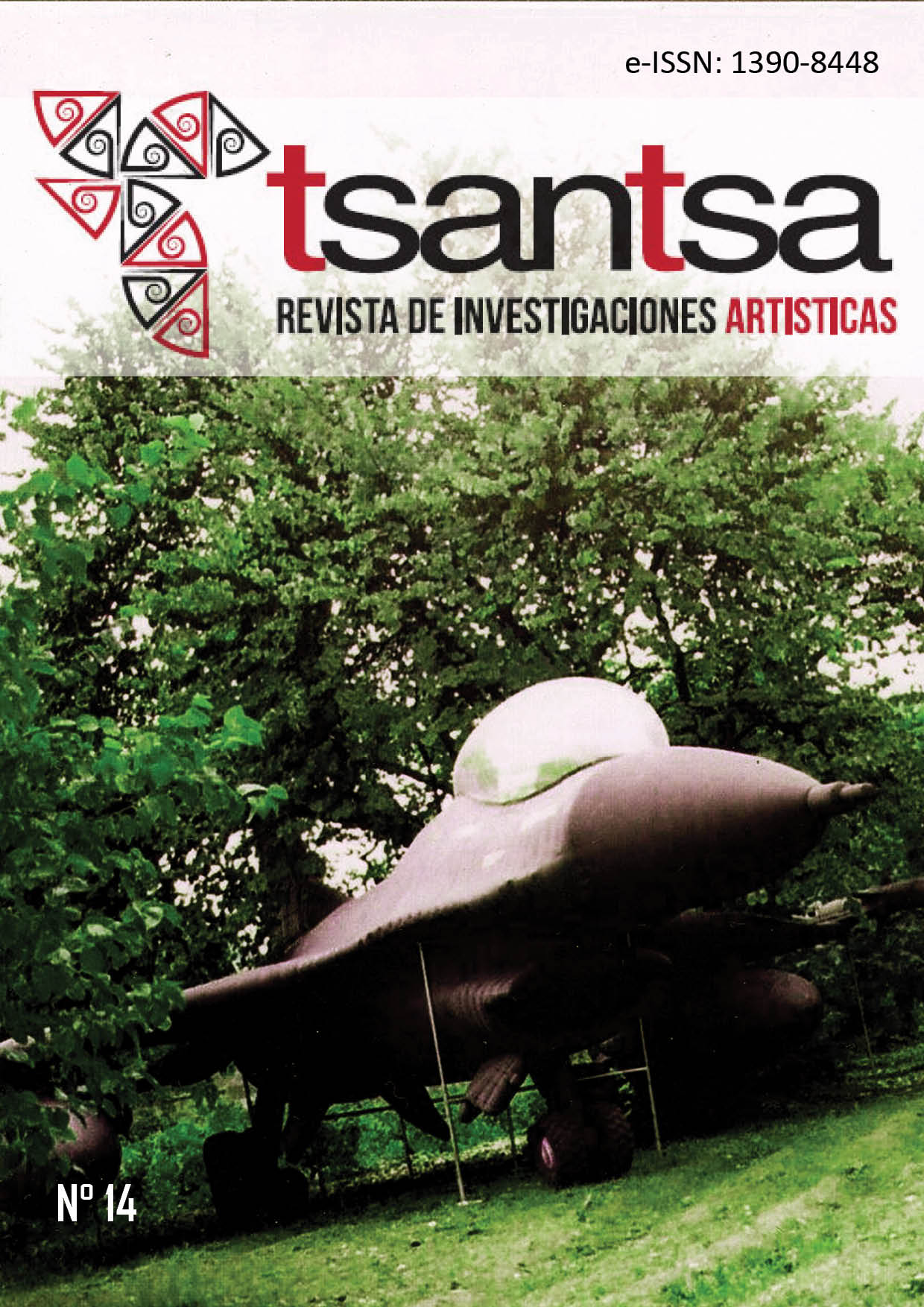La construcción del paisaje queer en torno al Mediterráneo
DOI:
https://doi.org/10.18537/tria.14.01.06Resumen
Esta investigación tiene por objetivo abordar dos conceptos, cuales son la liminalidad y lo queer a partir del análisis de los viajes y estadías en torno del Mediterráneo realizados por prominentes artistas durante los siglos XIX y XX. El supuesto hipotético plantea que el Mediterráneo ha ofrecido las condiciones liminales que le ha permitido convertirse en el destino preferido de viajeros con una orientación sexual queer. Estos personajes han plasmado sus intereses sexuales tanto en su obra literaria, pictórica, fotográfica, cinematográfica, etc., creando de esta manera una geografía íntima y personal que terminó por plasmarse en una arquitectura, que sirvió como refugio y teatro para su doble existencia homosexual. En ellas es posible apreciar toda una estética que podemos denominar como queer, que parte en la arquitectura y termina en la vestimenta, y que ha sido posible construir gracias a la existencia de este Mediterráneo liminal.
PALABRAS CLAVE: Queer, liminalismo, Mediterráneo, Orientalismo, arquitectura.
Descargas
Citas
Aldrich, R. (2002). The seduction of the Mediterranean: Writing, art and homosexual fantasy. Routledge.
Aldrich, R. (2008). Colonialism and Homosexuality. Routledge.
Baros, M. (2017) La construcción de la interioridad en el orientalismo arquitectónico : los refugios orientalistas de Pierre Loti, Frederic Leighton y Claude Monet. Editorial Académica Española.
Barrington, R. (2018). The life, letters and work of Frederic Leighton; Volume 1. Franklin Classics Trade Press.
Baudrillard, J. (1991). El sistema de Los objetos. Siglo XXI Ediciones.
Belmonte Barrenechea, M. (2015). Peregrinos de la belleza : viajeros por Italia y Grecia. Acantilado.
Betsky, A. (1997). Queer space: Architecture and same sex desire. William Morrow.
Boone, J. (2015). The Homoerotics of Orientalism. Columbia University Press.
Bozdoǧan, S. (1988). Journey to the east: Ways of looking at the orient and the question of representation. Journal of Architectural Education, 41(4), 38–45. https://doi.org/10.1080/10464883.1988.10758500
Brandlhuber, M. T. (Ed.). (2022). In the temple of the self. The artist’s residence as a total work of art: Europe and America 1800-1948. Hatje Cantz.
Burton, R. Francis. A plain and literal translation of the Arabian nights' entertainments, now entitled The book of the thousand nights and a night: with introduction, explanatory notes on the manners and customs of Moslem men, and a terminal essay upon the history of The nights. Shammar ed. [Denver, Colo.]: Printed by The Burton Club for private subscribers only, 1885.
Crinson, M. (2013). Empire Building: Orientalism and Victorian Architecture. Routledge.
Dakers, C. (1999). The Holland park circle: Artists and Victorian society. Yale University Press.
Davidson, J. (2009). The Greeks and Greek love: A bold new exploration of the ancient world. Random House.
Denisoff, D. (2004). Sexual visuality from literature to film 1850-1950. Palgrave Macmillan UK.
Diéguez, I. (2014). Escenarios liminales. Teatralidades, performatividades, políticas. Editorial Paso de Gato.
Dowling, L. (1994). Hellenism and homosexuality in Victorian oxford. Cornell University Press. https://doi.org/10.7591/9780801468742
Flint, K. (2008). The Victorians and the visual imagination. Cambridge University Press.
Hanegraaff, W. J., & Kripal, J. J. (2008). Hidden intercourse: Eros and sexuality in the history of western esotericism. Brill.
Hyam, R. (2017). Empire and Sexuality. Manchester University Press Melland Schill Studies.
Kestner, J. A. (1995). Masculinities in Victorian Painting. Scolar Press.
Kris, E., & Kurz, O. (1981). Legend, myth, and magic in the image of the artist: A historical experiment. Yale University Press.
Larsson, M., & Johnsdotter, S. (Eds.). (2015). Sexual fantasies: At the convergence of the cultural and the individual. Peter Lang AG.
Leighton House. https://www.rbkc.gov.uk/museums/history-leighton-house
MacCormak, P. (2009). Queer Posthumanism: Cyborgs, Animals, Monsters, Perverts. En Noreen, G. (Ed.). Ashgate research companion to queer theory. Ashgate Gower.
MacKinnon, K. (1997). Uneasy pleasures: Male as erotic object. Cygnus Arts.
Mary Roberts, "The Resistant Materiality of Frederic Leighton’s Arab Hall", British Art Studies,
Issue 9, https://dx.doi.org/10.17658/issn.2058-5462/ issue-09/mroberts
Mohammadzadeh Kive, Solmaz. “The Exhibitionary Construction of the Islamic Interior”. In Oriental Interiors: Design, Identity, Space, edited by John Potvin. London, England: Bloomsbury Academic, 2015.
Netton, I. R. (Ed.). (2013). Orientalism Revisited: Art, Land and Voyage. Routledge.
Orlove, B. S. (Ed.). (1997). Allure of the foreign: Imported goods in post-colonial Latin America. University of Michigan Press.
Parsons, D. L. (2003). Streetwalking the metropolis: Women, the city and modernity. Oxford University Press.
Pearce, S. M. (1999). On collecting: An investigation into collecting in the European tradition. Routledge.
Potts, A. (2000). Flesh and the ideal: Winckelmann and the origins of art history. Yale University Press.
Potvin, J. (Ed.). (2015). Oriental interiors: Design, identity, space. Bloomsbury Academic.
Reeser, T. W. (2016). Setting Plato straight: Translating ancient sexuality in the renaissance. University of Chicago Press.
Sasso, E. (Ed.). (2020). Late Victorian orientalism: Representations of the east in nineteenth-century literature, art and culture from the pre-raphaelites to John La Farge. Anthem Press.
Sorman, G. (2021). Mon dictionnaire du Bullshit. Grasset.
Thomas, C. (2009). On Being Post-Normal: Heterosexuality after Queer Theory. En Noreen, G. (Ed.). Ashgate research companion to queer theory. Ashgate Gower.
Turberfield, P. J. (2008). Pierre Loti and the theatricality of desire. Brill/Rodopi. https://doi.org/10.1163/9789401205573
Vercier B., Mélot J.P., Scaon, G. (2003). La maison de Pierre Loti à Rochefort. Paris: Editions du Patrimoine CMN.
Weir, D. (1995). Decadence and the making of modernism. University of Massachusetts Press.
Young, R. J. C. (2005). Colonial Desire: Hybridity in Theory, Culture and Race. Routledge.
Ziter, E. (2007). The orient on the Victorian stage. Cambridge University Press.
Descargas
Publicado
Cómo citar
Número
Sección
Licencia

Esta obra está bajo una licencia internacional Creative Commons Atribución-NoComercial-CompartirIgual 4.0.



